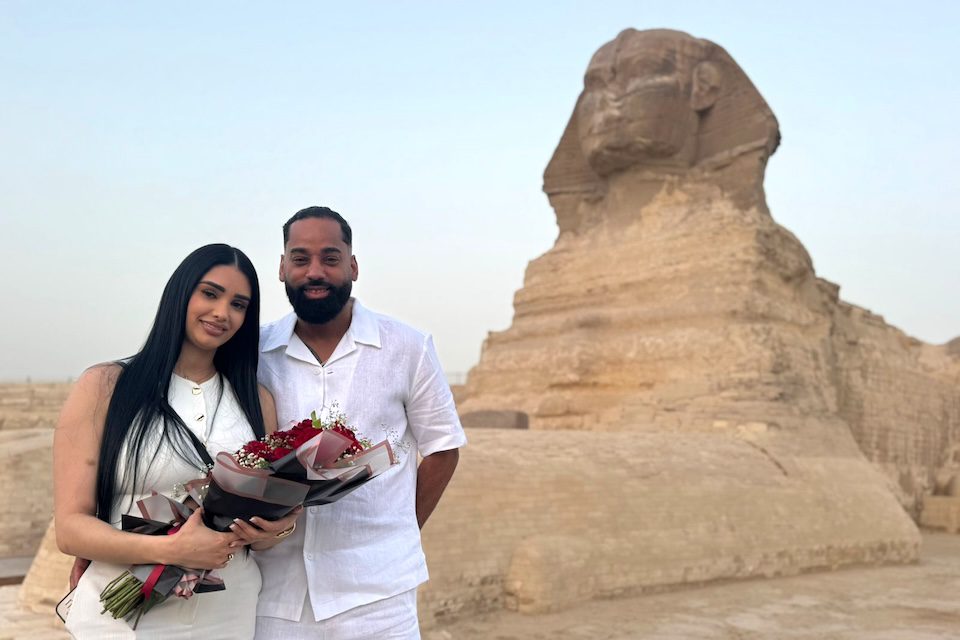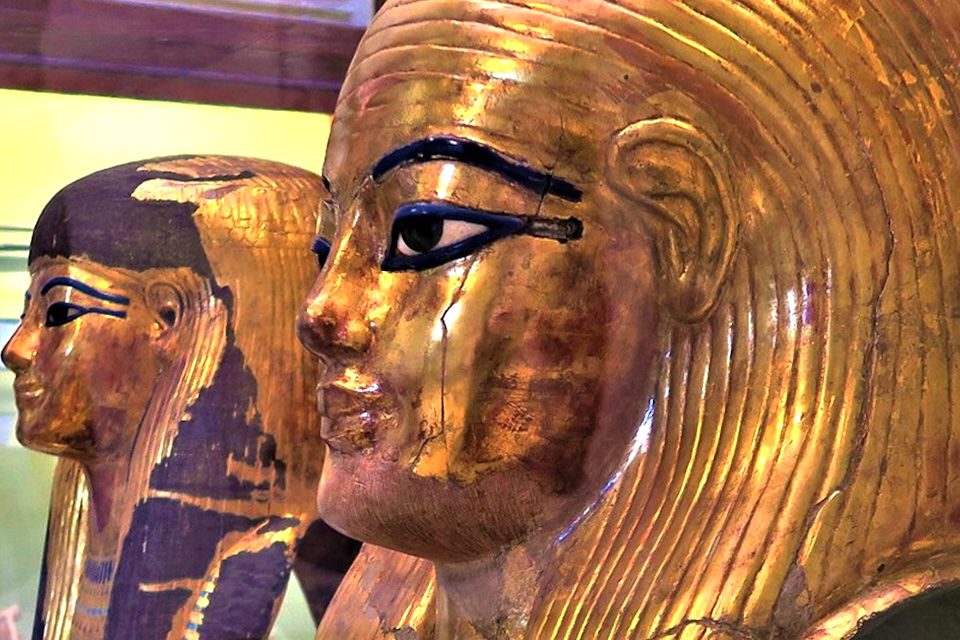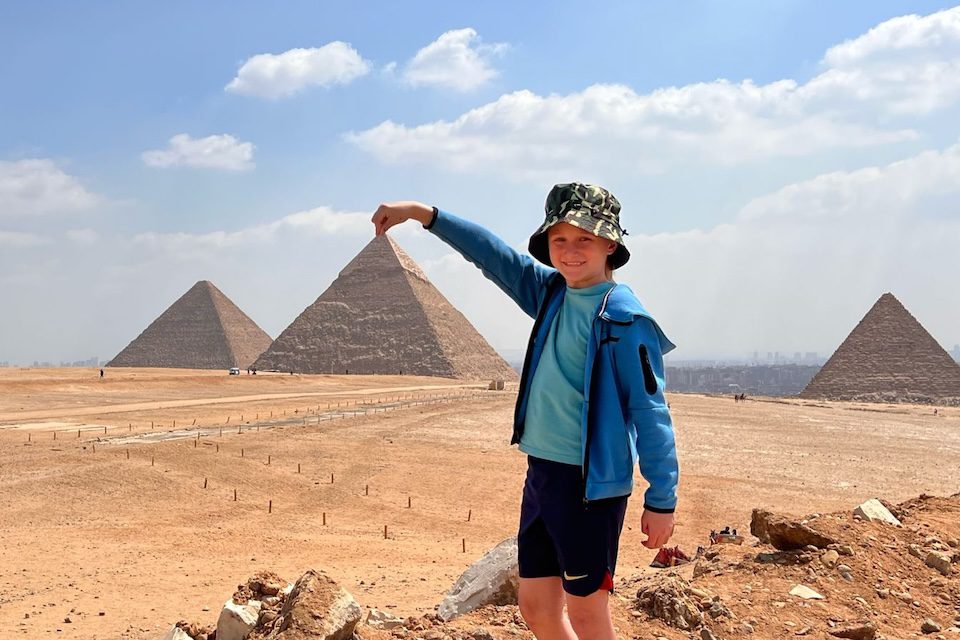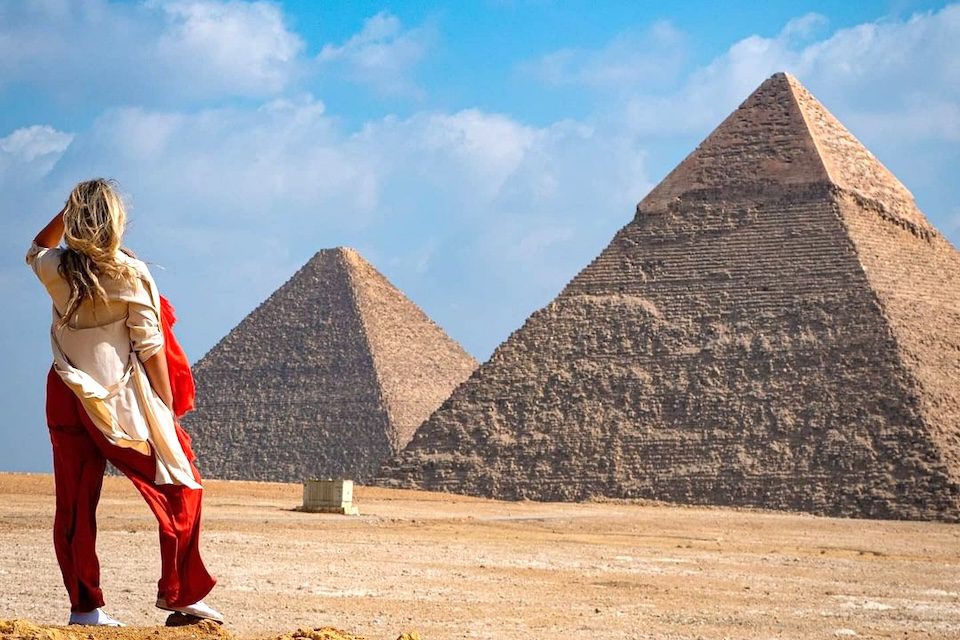
Egypt, its ancient gateway to the past, is a dream destination for millions around the world. One of the great pyramids that touch clouds to the immortal waters of the River Nile that narrate the stories of the ancestors, and from the treasures of museums that tell chapters from human civilization, to the colored coral reefs in the Red Sea, Egypt offers a unique mixture of history, culture, adventure and relaxation. To make this experience smooth and enjoyable, the tour packages come as an ideal solution for travelers looking for comfort and prior planning. Why do you choose the tour packages to visit Egypt? Travel packages provide many advantages that make your trip to Egypt more enriching: find out the advantages of booking an Egypt Travel package. Comfort and prior planning: Tourist packages are guaranteed with all the details of flights and hotels, transportation arrangements, and guided tours, which saves you the trouble of searching and long coordination. Value against money: Pyramids Trip company offers and discounts on service groups, which makes the total package more economical than reserving each element separately. Egyptian Local experience: It takes advantage of the experience that you will acquire from the local tour guides and drivers, with meeting locals in Souq or any part of the package, the guide will help to get a vision on Egyptian history and culture, and help you to move safely and effectively. Variety and flexibility: A Diversity of travel packages is available to fit what you are looking for, budget. Or category of travel, such as from Egypt classic trips to desert adventures, Luxury Packages, or relaxing on the beaches of the Red Sea, with the ability to change or amend to suit your taste. Safety and support: The trip package provides you with a communication support network if you face any issues during your travel, which gives you safety and reassurance. What are the Popular Travel Packages to Egypt? Tour packages in Egypt vary to meet all interests for visitors to Egypt; there are different types of packages, as follows. Classic Travel Packages: These packages focus on the landmarks and highlights of Egyptian civilization: Cairo (The pyramids in giza and Saqqar, the Grand Egyptian Museum, and the souq of Khan Al -Khalili), Luxor (Karnak and Luxor Temples, Valley of the Kings), and Aswan (Philae Temple, Kom Ombo temple), and usually includes a River Nile Cruise between Luxor and Aswan. Relaxing Trip Packages and beaches: ideal for recreation, sand, Sun and Sea, water sports in Sharm el-Sheik or Hurghada, where wonderful coral reefs can be discovered and explored. Adventure and desert safari packages: Safari trips to the Sinai or Egyptian oases such as Siwa or Fayoum Oasis, camping and exploration of the white desert or the black desert in Bahairya Oasis. Cultural & Historical Packages: PyramidsTrip.com provides trips that focus on discovering specific archaeological sites with in-depth exploration or visiting exclusive private openings Egypt Family Packages: These trips are designed for the needs of families with children to travel together, and include entertainment activities and visits to attractions. What to look for when choosing a tour package to Egypt? When choosing your travel package, consider the following points: The good reputation of the organization: Choose a good reputation travel company, which is Pyramids Trip, as it has positive evaluations from former travelers. Inclusions and exclusions: Check well what the package contains (accommodation, meals, internal airline tickets, entry fees, tour guides, transportation) and what is not included (international airline tickets, visas, additional meals, gratuities). Details of the domestic flight: Ensure that the schedules are suitable for your travel, including names on passports, and the timing with the destinations in Egypt. Customization travel package: Can you modify or amend parts of the package to suit your interests? In PyrmidsTrip.com, guests have the option for guests to modify and amend the packages to suit their international flight and their taste. Cancellation and modification policy: You shall be aware of the terms and conditions if you need to change your plans. What are the necessary destinations we should visit in Egypt? No visit to Egypt is complete without exploring these iconic sites: Cairo Landmarks: explore the amazing Giza Pyramids and the Sphinx, explore the Grand Egyptian Museum (GEM) when it opens completely, and Salah al-Din Castle and Old Cairo. Luxor highlights: Do not miss visiting Karnak temples and Luxor temple on the east bank, the Valley of the Kings, where the pharaohs are buried, and the Temple of Hatshepsut on the west bank. Aswan sites: visit The Temple of Philae of goddess Isis, the High Dam with a felucca ride on the Nile, with the trip to Abu Simbel. Nile Cruise: an unforgettable experience that sails on the eternal River Nile between Luxor and Aswan, enjoy the scenic landscapes in the valley, and visit temples on the banks of the Nile. Sharm el-Sheik/Hurghada resorts in the Red Sea: the paradise of divers and snorkeling, as well as for beach lovers for relaxation, and water sports. Tips for travelers to Egypt: The best time for travel to Egypt is from mid-September to mid-May in the year, as the weather is perfect; Otherwise, in the summer it is ideal for looking for quiet and low-budget. Visa entry to the country: Check the visa requirements for your country before traveling to Egypt The currency: the Egyptian pound, that have 5, 10, 20, 50, 100, and 200 banknotes. It is recommended to carry some small cash for emergencies and tipping. Clothes: recommended to have light and comfortable clothes, taking into account the respect of local customs when visiting religious sites such as mosques or Coptic churches. You must obtain travel insurance to Egypt from your country so that you can benefit from it in travel emergencies. In conclusion, the Travel packages to Egypt are the perfect choice for those who want to explore this great country with ease and comfort. Whether you are looking for a historical adventure or relaxation packages, Egypt welcomes you...

At the heart of the Giza Plateau, where the golden rays of the sun dance off the rocks of the pyramids, stands a majestic creature, blending the body of a lion with the wisdom of a human: the Great Sphinx. Visiting this historic monument goes beyond simply viewing a tourist attraction; it’s a unique opportunity to engage in mindful meditation practices and draw spiritual and intellectual strength from its timeless energy. If you’re seeking an experience that transcends the visual and touches the soul,… Before you visit the Great Sphinx on your private visit, Pyramids Trip offers you a guide on how to meditate on the Sphinx and draw inspiration from its majesty. Stage One: Mental and Physical Preparation Before you arrive at the site for your private visit, you can begin preparing yourself for a unique experience: 1. Research thoroughly and be aware: Read about the history of the Sphinx, the theories of its construction, its symbolism (strength, wisdom, protection), and its role in ancient Egyptian civilization. We can help you find the best references for good research. The more you understand its story, the more deeply you will connect with it. 2. Clear Intentions: Set your intention for this visit. Are you seeking inspiration from the Sphinx? The inner peace you desire? Answers to specific questions you seek? The strength to face your life’s challenges? Setting your intention helps your mind focus more. 3. Comfortable Clothing: Wearing comfortable, cotton clothing will help you feel physically comfortable, making it easier to focus on meditation. 4. Book Early: The earlier you book your private visit to the Sphinx, the better, as private visits are only available twice daily. Stage Two: Meditate in the Presence of the Sphinx Once you arrive at the Sphinx area with your companion, choose a spot from which you can see the statue while maintaining a distance that allows for good concentration. 1. Gazing Meditation: – Focus on its features: Begin by gazing quietly into the Sphinx’s silent face. Notice its mysterious expression, its eyes that seem to stare into eternity, and its lines sculpted by time. – Imagine the Spirit: Try to imagine the spirit behind this colossal statue. It is not just a stone, but a symbol of pharaonic wisdom, the power of nature (the lion), and the constancy of time and challenges. – Absorb the Dimensions: Take in the massive size of the statue as a single block of stone. Imagine the amount of work that went into carving it and the engineering precision required. This grandeur alone can be inspiring. 2. Sensory Awareness: – The Sound of Silence: Focus on the sound of “silence” that emanates from the age of this place despite the passage of time. If there is a wind, listen to its whispers through the stones. (The Touch of History: )Imagine the heat of the sun that has always caressed this stone, or the coolness of desert nights, or the rain that has fallen on its body. Feel the antiquity of time in the place. – The Scent of the Desert: Inhale the scent of dry dust and ancient soil; it is a scent that carries the fragrance of thousands of years without change. 3. Spiritual & Visualization Meditation: – Connect to Energy: Imagine a line of energy extending from your spiritual center (or heart) to the heart of the Sphinx. Feel as if you are receiving the wisdom, calm, and strength it radiates. – Existential Questions: Ask yourself: “What does this great edifice mean to me?” “What lessons can I learn from its resilience and steadfastness despite the challenges of time?” “How can I live my life with greater strength and wisdom, without the burdens?” – Visualization as a Shield: Imagine the Sphinx granting you a portion of its strength and steadfastness. Imagine you have the steadfastness of a lion and the wisdom of a human in the face of your challenges. This visualization can serve as a shield to protect you and provide you with confidence. – Silent Messages: Try to be receptive to any “messages,” thoughts, or visions that may arise during your meditation. Don’t immediately analyze them; just let them flow. Stage Three: Draw and Hold Power 1. Gratitude: Conclude your meditation with a moment of gratitude. Thank the Sphinx, the place, and the energy you felt. Gratitude enhances the power of the experience. 2. Conserve Energy: When you leave the site, try to retain the sense of calm and strength you gained. You can close your eyes for a moment and imagine that you are carrying a part of the Sphinx with you. 3. Journal: Write down your notes about the experience: What did you feel? What thoughts came to mind? What insights or inspirations did you receive? Journaling helps cement the experience in your consciousness. 4. Apply in Daily Life: The most important part of gaining strength is applying what you have learned. If you feel grounded, try to be even more grounded in your decisions. If you feel wise, try to apply it in your dealings. The Sphinx is not just a destination; it is a silent landmark. The Sphinx: More than Just a Stone Standing before the Great Sphinx is not just a tourist attraction; it is an invitation to open up to the energy of a sacred place and engage in a silent dialogue with the oldest icon of human civilization. Through mindful meditation, you can transform this visit into an inexhaustible source of inner strength, inspiration, and wisdom that will accompany you long after you leave the sands of Giza. Make your visit to the Sphinx a deep journey into your inner self, and you’ll discover that its silence carries echoes of timeless wisdom.

The Tomb of Tuya and Yuya is an important archaeological tomb located in the Valley of the Kings in Luxor, Egypt. It was discovered in 1905 AD; The tomb dates back to the New Kingdom in the Pharaoh’s era, specifically the 18th Dynasty BC. It was one of the few tombs discovered with mummies. The tomb contains the mummies of Tuya and Yuya, the parents of Queen Tiye, wife of King Amenhotep III. The tomb is considered one of the best-preserved tombs in the Valley of the Kings and contains a remarkable collection of artifacts, including funerary furniture, jewelry, and vessels. According to the official page of the Egyptian Ministry of Tourism and Antiquities, the mummies of Yuya and Tuya were discovered wearing cartonnage masks covered in gold leaf. Yuya was the father of Queen Tiye, wife of King Amenhotep III, and the husband of Tuya. Yuya came from the town of Akhmim (North of Luxor), where he is believed to have held a prominent position and held property. He was also a priest of the Egyptian God Min, the official deity in the region. Tuya held important religious titles, in addition to the title of Royal Mother of the Great King’s Wife. The explorer Quibell discovered the tomb on February 12, 1905. All the tomb’s artifacts were contained in a single chamber, devoid of any decoration or inscriptions. Although the tomb had been previously looted, many treasures were found, including artifacts depicting daily life, exquisite funerary furniture, and vessels made of alabaster and colored limestone. The tomb also contained the mummies of Yuya and Yuya, in excellent condition thanks to the high quality of their mummification. They also contained their inner and outer coffins, their masks made of gilded cartonnage inlaid with precious stones, visceral caskets and vessels, ushabti figurines, and the Papyrus of Yuya, inscribed with the Book of the Dead. The king lavished many titles on Tuya and Yuya, which raised them to high ranks, both military and religious. It is certain that Queen Tiye played a major political role in the era of King Amenhotep III and his son Akhenaten, who died in the eighth year of his reign. She participated with her husband in making the most influential decisions until she became widely known among nations and kingdoms. Some historians consider her one of the wisest and most astute Egyptian queens, due to her political cunning and experience in managing affairs. The greatest evidence of all these qualities is a statue of her head that was discovered in 1900 AD. All collections of the tomb are now displayed inside the Egyptian Museum at Tahrir Square.

For visitors wanting to lose themselves in ancient history, Egypt has always been a fascinating draw. Central to this interest are the world-famous pyramids—monumental buildings that have survived the test of time. Egypt Pyramid Tours provides a stunning trip into the past, whether your interests lie in the mystery of the pharaohs, the architectural wonders, or the appeal of desert landscapes. These trips let you fully experience one of the most famous civilizations in human history. Why the Giza Plateau Should Be Your Initial Stop Visiting the Giza Plateau, home of the Great Pyramid of Khufu, the Pyramid of Khafre, and the Pyramid of Menkaure, would complete any journey to Egypt. Over 4,500 years old, these buildings still astound tourists with their size and accuracy. Often featuring the mysterious Sphinx, which remains a quiet protector of the pyramids, most Egypt Pyramid Tours begin at this amazing location. The plateau provides an exceptional backdrop to study ancient burial customs and the importance of these royal graves. Diving Deeper with Expert Egypt Pyramid Tours Specialized trips that explore the archaeological and spiritual sides of ancient Egyptian civilization are offered for those who desire a more thorough experience. These might involve Egyptologist encounters offering thorough analysis, trips to nearby tombs, and access to internal chambers inside the pyramids. Whether you are a seasoned history buff or a first-time tourist, these concentrated Egypt Pyramid Tours expose lesser-known mysteries and increase your respect for ancient Egyptian creativity. Combining Your Pyramid Adventure with Cairo Tours Packages Although the pyramids are the main attraction of any Egyptian vacation, Cairo itself is a gold mine of historical and cultural marvels. Often integrating pyramid trips with urban discoveries, Cairo Tours Packages provide a well-rounded view of Egypt’s capital. Cairo is a city that effortlessly mixes ancient and modern life, from the Egyptian Museum containing King Tutankhamun’s golden mask to the lively Khan El Khalili market. These packages guarantee that visitors get the whole narrative of Egypt’s lively legacy. Discover Beyond the Pyramids: Sakkara and Dahshur Many Egypt Pyramid Tours go beyond Giza to cover other important locations such as Sakkara and Dahshur. Home to the Step Pyramid of Djoser, Sakkara is said to be the first massive stone structure in Egypt. Dahshur, on the other hand, has the Red Pyramid and the Bent Pyramid, both of which are vital for grasping the architectural development leading to the classic pyramid form. Visiting these lesser-known locations offers a more complete view of ancient Egyptian inventions. Cairo Tours Packages: Convenient and Customisable Different travellers have different interests and time limits; hence, Cairo Tours Packages are available in several shapes. From half-day urban highlights to multi-day cultural immersions, you may select. Often included in these packages are guided transportation, entry fees, and even meals—thereby making the trip pleasant and stress-free. Custom choices let you customize your schedule, so whether your interests are ancient history, Islamic architecture, or modern Egyptian life, there is a trip that fits you. What to Anticipate on a Pyramid and Cairo Tour Usually, both Egypt Pyramid Tours and Cairo Tours Packages include the convenience of air-conditioned transportation, expert guides, and well-chosen sites that maximize sightseeing possibilities. Expect early morning departures to beat the desert heat and make the most of the finest photographic lighting. Many historical sites need a good amount of walking, so dress comfortably and use walking shoes. Often offering interesting information not found in guidebooks, guides enhance your trip with background and narrative. Conclusion A trip that brings history to life is one spent discovering Egypt’s pyramids and the lively streets of Cairo. Whether you’re meandering through historic bazaars in the center of the city or admiring the massive buildings of Giza, both Egypt Pyramid Tours and Cairo Tours Packages guarantee lasting experiences. Visit pyramidstrip.com to design your ideal Egyptian travel and investigate several tour possibilities

Rising gloriously on the Giza Plateau, the splendid accomplishment of prehistoric engineering identified as the Great Pyramid of Giza is an icon of Egypt’s rich past. Built some 4,500 years back prior to that, this renowned architecture has fascinated travelers from all throughout the world, archaeologists, and historians. Beyond its obvious beauty, the Great Pyramid has secrets and features that still astonish and captivate.

Cairo, Egypt’s energetic city, is a breathing museum where past and current coexist peacefully. A Cairo city trip offers a unique chance to explore Egypt’s most famous historical artifacts, most especially the well-known Pyramids of Giza. Formed as tombs for pharaohs, these imposing buildings bear evidence of Egypt’s brilliance and technical mastery. Two of the Seven Wonders of the Ancient World are the Giza’s Pyramids and the mystifying Sphinx. Approaching them, one is naturally in wonder at the scope and mystery encircling these monuments for thousands of years.

How the Pyramids Were Built Discover Ancient engineering feats such as the Pyramids of Giza are so impressive that even today scientists and engineers cannot be sure exactly how the pyramids were built, but they have learned a lot about the people who built them and the political power needed to make it happen.

Abu Simbel Temple Tour Explore Ramses built it to record his military victories and built a temple next to it out of love for his wife, and his Holy of Holies witnesses the sun’s rays twice a year. On its walls are spread Pharaonic inscriptions and hieroglyphic writings that bear witness to King Ramses’ victories in his military wars, most notably the Battle of Kadesh against the Hittites, which witnessed the first peace treaty known to ancient history. In addition to that, the temple embodied another image of the Egyptian pharaoh’s personality, which is the romantic side and his love for his beloved wife Nefertari, for whom he built a temple of love, next to his great temple and sanctified her femininity and described her as a goddess in some inscriptions and raised her status and position in ancient Egyptian society. The Abu Simbel Temple was first discovered in the modern era in 1913, about 200 years ago. Before that, the temple was completely covered by sand, and the temple was completely buried under the sand for a long time. The temple remained in this state until a Swiss traveler named “Johann Burg Hart” came in 1813. He was on an official mission to discover the sources of the Nile in southern Egypt and northern Sudan. During his journey using a Nile boat, he noticed a part of the temple appearing and recorded it in his diary. Three years later, an Italian explorer named “Jovan” came after him. Archaeologists considered him an antiquities thief because he was excavating for antiquities with funding from the British delegate at the time of the occupation. His excavation was in an unscientific manner that harmed Egyptian antiquities. He took with him many small statues of the temple to Britain, and they are currently in the British Museum in London. However, he is credited with discovering the temple because he removed tons of sand from the temple, which took him about 10 consecutive years. The reason for naming the temple Abu Simbel goes back to the locals who refused to show the discoverers the location of the temple, but the discoverers communicated in a way that a child showed them the location of the temple, and this child was attributed to the name of this temple “Simbel” – which is a common, unwritten story – but the temple was called “Per-Ramesses” by the ancient Egyptians, the pharaonic name meant “the house of Ramses, beloved of Amun, who was glorified by his victories”. The Abu Simbel Temple was built approximately 3200 years ago, or in the 12th century BC, and this temple was built by one of the most famous kings of Egypt throughout ancient Egyptian history, because he ruled for a long period and made great efforts in Egypt from an architectural and military perspective at this time, and he is Ramses II, the third king of the 19th dynasty in the time of the modern state, according to the division of the Greek historian “Manetho” who divided the pharaonic rulers into “families”. The walls of the Abu Simbel Temple recorded the wars of Ramses II with his enemies, who ruled Egypt for 67 years and cared about the architecture of the temples in addition to his strength and military campaigns. He was keen to show his greatness through the temple and its structure carved into the solid rock of the mountain. The facade of the temple is preceded by 4 giant statues representing King Ramses II sitting on the throne in the traditional position. The height of the facade is about 33 meters, its width is 38 meters, and the height of each statue is about 20 meters, indicating the enormity of the temple and its facade. The statue exceeds the size of a normal human many times. On the right and left, and between the legs, there are smaller statues representing members of the royal family, in addition to other statues of two deities and the sacred sun disk, in addition to the presence of 22 baboons, the number of the regions of Egypt at this time, which symbolizes the worship of the sun. He chose it because this animal comes out to the sun at sunrise every day and raises its hand, and he considered it to be rejoicing at the sun’s emergence, which was embodied in the temple. Egypt was the first country to know peace treaties, as shown by the walls of the Abu Simbel Temple, which recorded the first written peace treaty between the Pharaohs and the Hittites of Anatolia in Asia (Turkey, Iraq, Syria) and other regions. These wars lasted for about 23 years, until King Ramses himself came out at the head of an army in the most famous Battle of Kadesh in ancient Egyptian history, and victories were recorded for the two kingdoms, but they were fierce battles that took place in the Syrian city of Kadesh, in which both sides suffered heavy losses. Next to the great temple of King Ramses II in Abu Simbel, there is another temple, the small temple of Nefertari. Although Ramses had 100 children after marrying 24 women, Nefertari was his beloved and favorite wife, so he built a temple of love for her next to his great temple, in a precedent that is the first of its kind in Pharaonic history, to the point that he ranked his wife among the gods without a scientific explanation for this meaning that King Ramses did. The Temple of Nefertari is dedicated to Ramses’ wife and beloved, and he wrote historical phrases to her, confirming that this temple is for his wife, for whom the sacred sun rises. The facade of the temple of the wife consists of 6 large statues, 4 of which represent King Ramses and 2 represent Queen Nefertari. The height of each statue is about 10 meters. On the right and left there are small statues of princely children, sons of the king and queen, each with...

Forgotten Landmarks of Cairo Explore The Pyramids of Giza, the Sphinx and the Cairo Tower are among the most famous and most visited historical landmarks in Cairo, which receive great media publicity. But what about other landmarks with a long history such as the Babylon Fortress, the Church of Saint Abu Serga, and the Windsor Hotel? Many of these monuments date back more than two thousand years, but do not receive the same great media coverage or fame among tourists that other landmarks receive. Take a tour with us to some of these landmarks and discover the history behind them:










